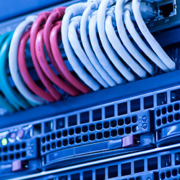How much should your company spend on IT?
In this increasingly digital world, we all know how important it is to allocate the right budget for our business IT needs. It’s estimated that, around the world, IT spending will rise to $3.8 trillion by the end of 2019. More organizations are realizing the importance of investing in their technology as a driver for overall business success and growth.
However…that doesn’t mean that every business needs to invest huge sums of cash into their IT infrastructure.
So how do you calculate the right IT budget for your company’s unique needs?
Is it possible to save money while still aligning with your short and long-term commercial goals?
We’ve got the answers right here. Below, we’ve listed some to consider when you’re devising your own annual IT spending plan.
What do you need from your IT?
Before deciding on an IT budget, you should understand what you’re hoping to achieve from your IT systems. In this sense, every business is unique, which is why so many SMBs are turning to managed IT services providers for their IT budgeting strategy.
Decide what’s important to you, in both the long and short term. Chances are, you’ll want your IT to help you:
- Minimize downtime
- Streamline operating processes
- Secure and protect customer data, and confidential business information
- Scale your storage requirements to suit your changing commercial needs – for example, cloud or paperless storage solutions
Above all, your IT should help you run your business more effectively, without draining your entire annual budget! Let’s consider what this means for you.
Your business type matters
Different businesses will allocate different sums to their IT budget, depending on which sector they’re operating in. For example:
- Banks typically spend around 7% of revenue on IT
- For technology and telecommunication companies, this goes down to around 4%
- Construction companies typically spend the least on IT, at around 2% of revenue
What does this mean practically?
SMBs generally spend between 3% and 6% of their revenue on IT budgets. For any SMB, this is a good starting point.
Why?
Because this is a manageable level for most SMBs. It allows you to maintain your IT budget even if there are fluctuations in annual performance. It also allows you to scale your IT and adjust your budget when necessary.
For example, you can increase your percentage spent each year by 1% if your business grows that year.
Understand your recurring expenses
Some IT costs are variable, but others stay put. Know how much these predictable costs come out at and always budget for them.
Example costs include:
- License fees, such as subscriptions to Microsoft and other software
- URL registration
- IT service provider fees, such as Mission Critical IT Support
- Content management systems
- Wireless systems, such as cloud-based storage solutions
Even if these costs fluctuate, it won’t be by much, so this is a great baseline to start from.
Long and short term hardware spending
We know, we know – technology changes all the time. You only buy a smartphone and it’s already “old news”.
It turns out, though, that there’s no need to replace equipment all the time, so long as:
- Buy as recent a model of printer/smartphone etc. as you can afford, because it’ll be supported by the manufacturer and it’ll take longer to need replacing
- Know how long products last. For example, there’s no need to upgrade routers more than ever 4 – 5 years
- Choose scalable solutions, such as cloud-based platforms, that you can expand to suit your growing needs without overstretching your IT budget
The bottom line?
There’s no “magic number” to allocate to your IT budget.
What’s important is that you know where your company is heading — business plans come in handy here! This is why you must start from a manageable figure that you can adjust when necessary. That’s the real “Mission Critical”.
GB Tech offers Mission Critical IT Solutions for a Dynamic World. Find out more here about how we can help your business soar to new horizons.























